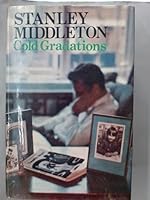You Might Also Enjoy
Book Overview
When technology is outlawed, the future looks a lot like the past. Thirteen-year-old Caden Aire spends his days working in the fields and his nights sleeping in a horse stable, all under the watch of Metl-Earth's mysterious and artificial second moon, a looming relic of humanity's lost era. But Caden's simple life changes when one night, a fiery red X suddenly appears on Metl's surface, and the same red Xs start glowing on his palms. Now Caden must find the only person who knows what's happening to him, but he doesn't have much time. Metl has started on an impact course with Earth, and to stop it, Caden will have to face both the unsettling truth about his world ... and about himself.
Format:Paperback
Language:English
ISBN:1948671115
ISBN13:9781948671118
Release Date:March 2019
Publisher:Month9books
Length:259 Pages
Weight:0.65 lbs.
Dimensions:0.6" x 5.0" x 8.0"
Age Range:9 to 12 years
Grade Range:Grades 4 to 7
Related Subjects
TransportationMore by Stanley Middleton
Customer Reviews
0 customer rating | 0 review
There are currently no reviews. Be the first to review this work.































































